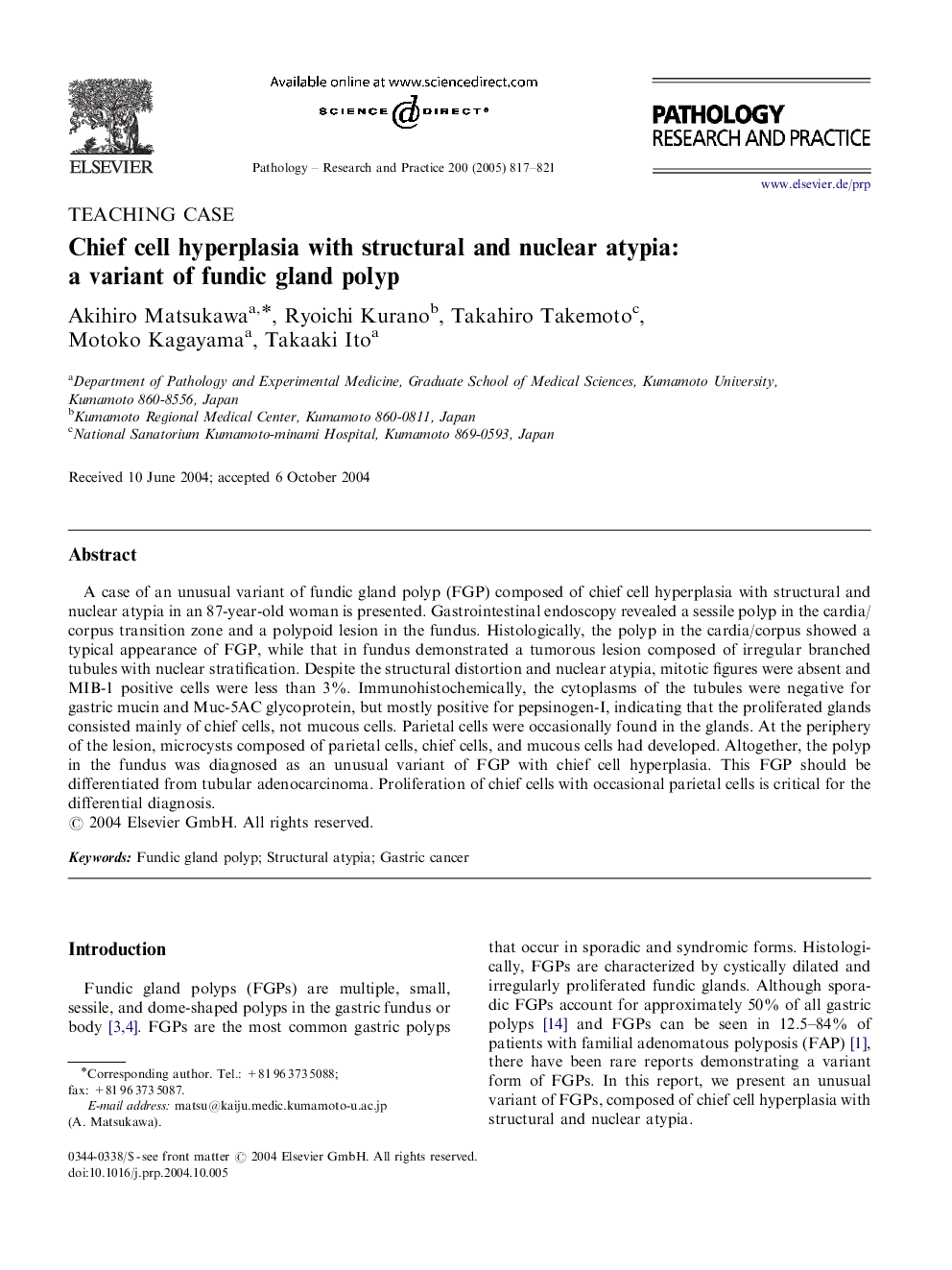| Article ID | Journal | Published Year | Pages | File Type |
|---|---|---|---|---|
| 9910917 | Pathology - Research and Practice | 2005 | 5 Pages |
Abstract
A case of an unusual variant of fundic gland polyp (FGP) composed of chief cell hyperplasia with structural and nuclear atypia in an 87-year-old woman is presented. Gastrointestinal endoscopy revealed a sessile polyp in the cardia/corpus transition zone and a polypoid lesion in the fundus. Histologically, the polyp in the cardia/corpus showed a typical appearance of FGP, while that in fundus demonstrated a tumorous lesion composed of irregular branched tubules with nuclear stratification. Despite the structural distortion and nuclear atypia, mitotic figures were absent and MIB-1 positive cells were less than 3%. Immunohistochemically, the cytoplasms of the tubules were negative for gastric mucin and Muc-5AC glycoprotein, but mostly positive for pepsinogen-I, indicating that the proliferated glands consisted mainly of chief cells, not mucous cells. Parietal cells were occasionally found in the glands. At the periphery of the lesion, microcysts composed of parietal cells, chief cells, and mucous cells had developed. Altogether, the polyp in the fundus was diagnosed as an unusual variant of FGP with chief cell hyperplasia. This FGP should be differentiated from tubular adenocarcinoma. Proliferation of chief cells with occasional parietal cells is critical for the differential diagnosis.
Keywords
Related Topics
Life Sciences
Biochemistry, Genetics and Molecular Biology
Cancer Research
Authors
Akihiro Matsukawa, Ryoichi Kurano, Takahiro Takemoto, Motoko Kagayama, Takaaki Ito,
